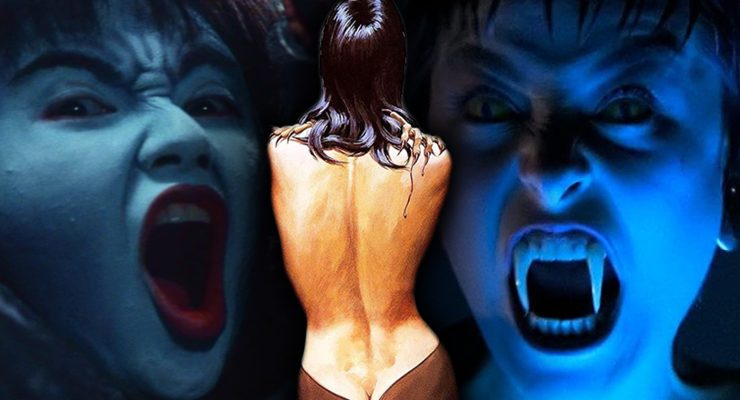Double Indemnity, 1944.
Directed by Billy Wilder.
Starring Fred MacMurray, Barbara Stanwyck, Edward G. Robinson, Porter Hall, Jean Heather, Byron Barr, John Philliber, and Tom Powers.
SYNOPSIS:
Criterion continues its string of 4K upgrades of classic movies with Billy Wilder’s 1944 film, Double Indemnity. The 4K presentation is sublime, and Criterion threw in a pair of Blu-rays, one for a 2K copy of the film plus some bonus features and the other containing a three-hour examination of the prolific auteur’s life and career.
“Film noir” is a recognizable term to most film fans, but when Billy Wilder’s Double Indemnity hit theaters in 1944, it was still something of a new idea, which has led many critics in the decades since to label it the first film noir. So if you’re a fan of that genre and haven’t seen this one yet, now is your chance to appreciate it in glorious 4K, courtesy of Criterion.
Co-written with pulp fiction author Raymond Chandler, Double Indemnity is about a seemingly mild-mannered insurance salesman named Walter Neff (Fred MacMurray) who becomes smitten with Phyllis Dietrichson (Barbara Stanwyck), the wife of one of his clients. When he makes a pass at Phyllis, she enlists him in a scheme to get her husband to unwittingly sign up for accident insurance and then meet his demise so she can collect double the value of the policy, also known as double indemnity.
They pull off the first part of the plot, but Walter’s suspicious boss begins questioning the way Mr. Dietrichson died, leading Walter to befriend Phyllis’s stepdaughter to learn more about his new lover’s past. It soon becomes clear that he might end up Phyllis’s next victim, setting the stage for a climactic ending.
Double Indemnity is notable because not only is it an early example of a film noir, but the script is full of Billy Wilder’s trademark snappy patter. In particular, the first time Walter meets Phyllis, their back-and-forth is peppered with double entendres as the pair express their interest in each other. They avoid direct language, as if they don’t want to speak their true intentions out loud for fear of someone hearing them.
It’s also a notable movie because it’s set in Los Angeles, rather than New York City, Chicago or some other obvious choice. LA was strongly associated with the glitz and glamor of Hollywood back then, so this was one of the rare opportunities for filmgoers to take in a seedy side to the city. And, yes, LA is still seen as a glamorous city, but Double Indemnity paved the way for filmmakers to show it in a different light, such as Curtis Hanson’s L.A. Confidential.
This film was shot in black-and-white, and the 4K presentation here is a sight to behold. The only other extra on the 4K disc is the commentary track, allowing maximum space for the film to look its best. My understanding is that Double Indemnity has suffered from some lackluster presentations in the past, particularly with close-ups that look washed out, but the film looks beautiful here, with plenty of detail in the close-ups and rich, inky black shadows, among other things.
Criterion also included a pair of Blu-rays, one with the same 4K presentation (you’d probably be hard-pressed to see a difference between the Blu-ray and the 4K on a standard setup) and part of the extras and the other with the rest of the bonus features. The company also commissioned a couple new extras, which I’ll note below:
• Commentary track: From 2006, this track features the late Richard Schickel providing one of those “film class in a commentary track” discussions that Criterion is famous for. He leaves no stone unturned as he examines the film, from its inception as an adaptation of James M. Cain’s novel to a legacy that continues to reverberate today.
• New interview with Eddie Muller and Imogen Sara Smith (32 minutes): The pair of critics discuss the film inside and out, even going so far as to debate between them whether Double Indemnity is the greatest film noir.
• New interview with Noah Isenberg (18 minutes): The scholar, who edited the book Billy Wilder on Assignment, focuses on the director’s career, which was lengthy and prolific. In particular, we learn a lot about Wilder’s early years in Europe and how his pre-World War II experiences there shaped his film career in the United States.
• Shadows of Suspense (38 minutes): This 2006 documentary digs deep into the history of film noir. It spends plenty of time on Double Indemnity but examines plenty of other movies too.
• Radio plays (87 minutes): These are two radio adaptations of the movie, one from 1945 and the other from 1950. MacMurray and Stanwyck reprise their roles for both of them.
• Billy, How Did You Do It? (185 minutes): Taking up the entirety of the second Blu-ray disc, this is the ultimate look at the writer/director/producer’s career, with plenty of footage from interviews with him and others he influenced. It was created in 1992 for the BBC.
The original film trailer is included too, along with Criterion’s usual printed booklet. This one is a fold-out pamphlet that contains information about the restoration, as well as an essay by critic Angelica Jade Bastién.
Flickering Myth Rating – Film: ★ ★ ★ ★ / Movie: ★ ★ ★ ★
Brad Cook















